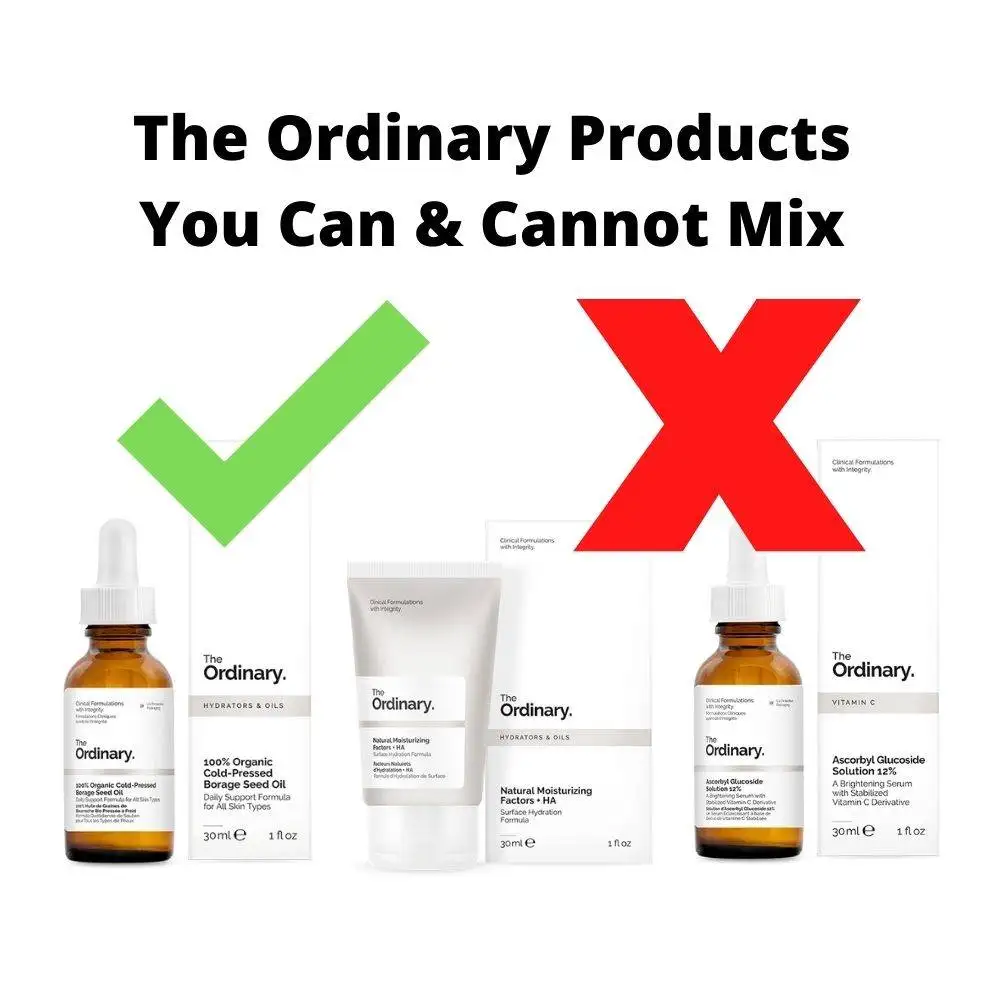Here is everything you need to know about how to patch-test The Ordinary skincare products.
- Why is it important to patch-test The Ordinary?
- I’ve never had an allergic reaction before. Do I really need to patch test?
- Does everyone patch test?
- The Ordinary products that seem to cause the most reactions
- Irritation around the eyes
- How to patch test products.
- Patch testing The Ordinary Salicylic Acid 2% Masque
- How to patch test Niacinamide, Retinols, Acids, Peptides and other leave-on products.
- Patch testing rinse-off products
- How to patch test Deciem Masks and Peeling Solutions
- Symptoms of allergic reactions
- The Ordinary Allergic Reactions That Made The Headlines! These might make you patch-test!
- Video about skincare products – irritation & allergic reactions
Why is it important to patch-test The Ordinary?
It’s important to patch test The Ordinary products in case of any irritation or allergic reactions.
Once you know your skin is ok with these ingredients, you can continue to use them safely in your routine and then start to layer them. As you start to layer The Ordinary, keep paying attention to how your skin looks and feels and ensure you are not using any products that conflict or overusing products.
I’ve never had an allergic reaction before. Do I really need to patch test?
There´s always a first! You might be absolutely fine, but then again, you might not. Allergic reactions can happen to anyone at any time. They can be really painful and sometimes take a lot of time to heal and cause damage to your skin. Allergic reactions can also be very dangerous. It´s better to be safe than sorry.

Does everyone patch-test The Ordinary?
The truth is the majority of people do not patch-test products. I ran a poll in Instagram Stories, and you can clearly see the results above!
- 72% do not patch test
- 5% do patch-test
- 22% say they sometimes patch-test
So why don’t people patch-test?
- They think their skin can tolerate anything because they´ve never had a reaction before.
- People get excited when they receive all their skincare goodies and want to apply them all.
- Some people watch their favourite influencers on Instagram, TikTok, and YouTube and just follow what they say and do rather than read the instructions. Please don´t do this!
- Because it´s not something people do. Do you patch-test every piece of makeup you apply to your face?
- People don´t think these products can cause any harm.
Which The Ordinary products cause the most reactions?
According to the posts in the Facebook Group, these are The Ordinary products that seem to cause the most reactions, according to the posts in the Facebook Group.
- The Ordinary Salicylic Acid 2% Solution
- AHA 30% + BHA2%
- Salicylic Acid Masque
- Niacinamide
- But remember, you can react to any product!
Irritation around the eyes
It’s important to avoid the eye area when applying products, particularly if products say to avoid the eyes.
How do I patch-test The Ordinary products?
This is how The Ordinary recommends patch-testing their products. Some people react very quickly to certain ingredients, whilst for others, it may take some time for a reaction to show, which is why it’s best to do a patch test over 3 days.
How to patch test The Ordinary Salicylic Acid 2% Masque
- Apply the product as directed to a small area once a day for three days to test if you are sensitive to this product.
- If you develop severe irritation, hives, swelling of eyes and mouth, blistering, or difficulty breathing, rinse off, cease use and consult a physician right away.
The Ordinary Salicylic Acid 2% Solution:
- Apply the product to a small area once a day for three days to test if you are sensitive to this product.
- Start with one application daily.
- If dryness or peeling occurs, reduce application to once a day or every other day.
- If you develop severe irritation, hives, swelling of eyes and mouth, blistering, or difficulty breathing, rinse off, cease use, and consult a physician immediately.
The Ordinary Niacinamide, Retinols, Acids, Peptides and other leave-on products
- Apply a small amount of the product onto a clean area of skin on the upper forearm.
- Keep the area dry.
- After 24 hours, rinse the area.
- Do not use the product if any redness, burning, itching, blistering, or irritation is observed at any time throughout the test.
How to patch-test Deciem rinse-off products
Cleaners, Shampoos, Conditioners, Body Washes, Grooming Products.
- Apply a small amount of the product onto a clean skin area on the upper forearm.
- Keep the area dry.
- After 24 hours, rinse the area.
- Do not use the product if any redness, burning, itching, blistering, or irritation is observed throughout the test.
How to patch test Deciem Masks and Peeling Solutions
The Ordinary AHA 30% + BHA 2% Peeling Solution, NIOD Mastic Must, NIOD Myrrh Clay, NIOD Flavanone Mud.
- Apply a small amount of the product onto a clean area of skin on the upper forearm.
- Leave on for the specified length of time stated in the directions of use of the product.
- Rinse off when the specified time has passed.
- If any redness, burning, itching, blistering or irritation is observed within 24 hours of the patch test, do not use the product.
Symptoms of allergic reactions
- severe irritation
- redness
- burning
- hives
- swelling of the eyes and mouth
- blistering
- difficulty breathing
The Ordinary Allergic Reactions That Made The Headlines!
Here are some stories about The Ordinary Salicylic Acid that made the headlines. This product has since been reformulated, but I think it’s important to share with you that 74% of the Deciem Addicts absolutely love this product and couldn´t wait for it to be back in stock.
These stories are terrible, and their skin looks awfully painful. I really hope their skin has recovered well. It´s essential to bear in mind that we do not know if patch tests were carried out correctly or if the product was used on compromised skin or anything else that could have caused such a reaction. We don´t know if they were out in the sun all day. This product can cause chemical burns which is why it should be patch-tested and then spot-tested before applying all over the face. Please always read the instructions before using them.

Allergic Reactions To Skincare, Sun Cream, Perfumes – anything!
People have allergic reactions all the time, but rarely do they make the headlines. I’ve personally had reactions and burns from sun creams by La Roche Posay, Frezyderm and a Kiehl’s product. I was very unwell with a Jo Malone room diffuser and also the Zadig & Voltaire perfume for women. Deodorants with aluminium are now a complete no-go area. I thought I suddenly had a terrible reaction to a hair dye I had used for years, but it was actually the powder inside the plastic gloves. Whilst I have a lot of allergy issues, I´m pleased to say I have never had a reaction to The Ordinary.
Videos about skincare products – irritation & allergic reactions
Here’s a really informative video all about skincare irritation and allergic reactions with Dr Sam. In the unfortunate event that you suffer a reaction or irritation, please remember to patch-test any products that have been recommended to repair your skin. Just because these are “repair” products or specially designed for sensitive skin, doesn´t mean you will not have a reaction to them. I have had some of the worst reactions from products for “sensitive skin”.
A quick recap – How to use The Ordinary safely
- Patch test, patch test, patch test!
- Read the instructions on the official The Ordinary page before using them.
- Always check which products you can and cannot use together.
- If you have any treatments like laser, botox, micro-blading etc., speak to the professional who is doing the procedure and ask if you should avoid using certain ingredients before and after. When I had micro-blading, I was told to avoid acids and retinol for a week beforehand and a few weeks after.
- Some of these products can cause skin sensitivity. Direct sun should be completely avoided.
- Use a good SPF every day! This really is the most important step in your skincare routine.
























